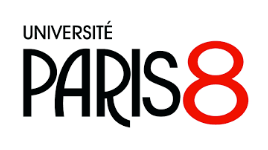12h00
visio
Irish initial consonant mutation (ICM) is the systematic alternation of word-initial consonants in a range of morphosyntactically defined environments: e.g. [b]ro´g ‘shoe’; an [v]ro´g ‘the L.shoe’ (“lenition”); a´r [m]ro´g ‘our E.shoe’ (“eclipsis”). Because ICM involves a complex mix of phonological and morphosyntactic factors, an in-depth analysis of the system can inform our understanding of the interface between these components of the grammar. Considerable promise has been shown by autosegmental models, which assume mutation is caused by floating phonological material residing at the right edge of a so-called “trigger word” that directly precedes the mutation target (e.g. Lieber 1983; Iosad 2014; Breit 2019; Laoide-Kemp 2023). However, this approach makes a clear prediction that the conditions for insertion of the trigger word cannot depend on the post-mutation identity of the following segment (since at the point of insertion of the trigger word, mutation has yet to place). In this talk, I examine a case where this prediction seems not to hold. The so-called “historic tense particle” d’ appears only in the context of an empty consonantal slot in the post-mutation form of the target word; thus, it seems as though it cannot itself be the trigger of mutation. I consider two possible solutions to this puzzle:
- Morphosyntactic solution: Preverbal d’ is not a mutation trigger word: instead, this particle and a separate lenition-inducing verbal prefix are distinct exponents of historic tense, with the former being inserted only after the latter has been inserted and phonologically processed.
- Phonological solution: Preverbal d’ is a phonologically deficient “floating d” which is always inserted (alongside lenition-inducing phonological material), but only pronounced if it can be linked to an available C-slot (working in a strict CV framework; see e.g. Scheer 2012).
I present evidence from certain mutation-resistant verb forms, as well as dialectal variation, and ultimately argue that the phonological solution is a better fit for the data. I conclude with some reflections on what this solution tells us about the Irish phonological system and its interface with morphosyntax
References: Breit, F. (2019). Welsh mutation and strict modularity (Doctoral dissertation). UCL. Iosad, P. (2014). The phonology and morphosyntax of Breton mutation. Lingue e linguaggio, 13(1), 23-42. Laoide-Kemp, A. (2023). Irish initial consonant mutation: disentangling phonology from morphosyntax. In M. Jaurena & Z. Metzler (Eds.), Proceedings of the 35th WECOL (Vol. 29, p. 58-68). California State University, Fresno. Lieber, R. (1983). New developments in au- tosegmental morphology: consonant mutation. In Proceedings of the WCCFL (Vol. 2, p. 165-175). Scheer, T. (2012). Direct interface and one-channel translation. Berlin/New York: De Gruyter Mouton.



